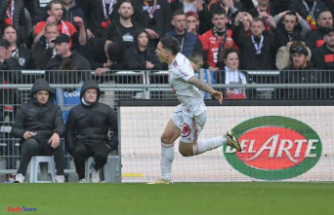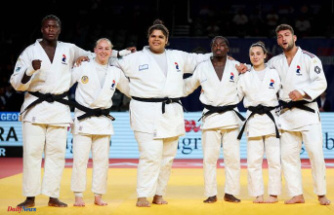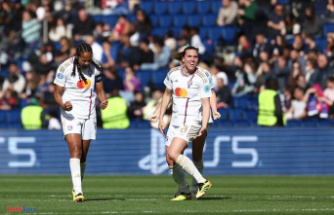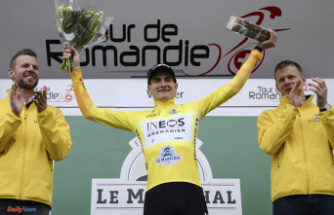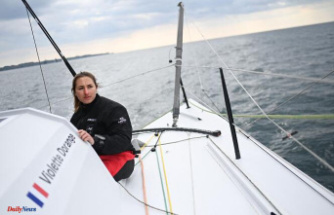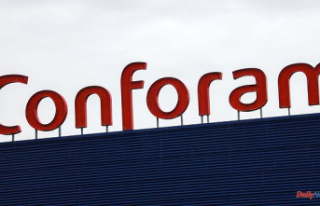Tall, athletic, sure of himself, endowed with a piercing gaze: Hubert Auriol had everything of a cinematic adventurer.
The former pilot died this Sunday at the age of 68 "from a cardiovascular accident following a long fight against illness", announced his family.
Born June 7, 1952 in Ethiopia, where his father ran the railway company, nothing destined him to rally-raid where he earned his nickname "the African". After returning to France at the age of eleven, he studied economics and started selling textile products. At 20, he discovered motorcycling through trials. He then participated in the French enduro championship in 1980 and won a national title there.
It was in 1979 that he lined up for the first Paris-Dakar on the handlebars of the legendary all-terrain motorcycle of the time, the Yamaha 500 XT. He finishes 7th. The following year, he returned with a more powerful motorcycle which would also become a legend: The BMW R80GS, the ancestor of the "big trails" so popular today. However, he was disqualified for having been "picked up" by a taxi-brousse after a breakdown.
Auriol knew he was on the bike to win, which he did in 1981 and then in 1983 against stiff competition from his teammate, the Belgian Gaston Rahier.
The rivalry between the two men is exacerbated, Auriol accuses Rahier of following him without worrying about the navigation and of overtaking him just before the finish. He slams the door of the BMW team and Rahier then wins the Dakar in 1984 and 1985.
Hubert the African changes mount and lines up on the handlebars of a hybrid machine, a Ligier (actually a Cagiva) with a Ducati engine. He finished 8th and retired on the same bike in 1986, the year of the death of the event's creator, Thierry Sabine, in a helicopter accident, with the artist Daniel Balavoine.
In 1987, in the lead two days from the finish ahead of Cyril Neveu (Honda), he hit two tree stumps hidden in the sand, fell heavily and got back on his bike, grimacing in pain. On arrival, he is in tears and cannot remove his boots himself because his two ankles are broken. The images are taken up by television news with a paralyzed Auriol declaring: "Cyril is the strongest, I'm stopping the bike".
"He was an adversary, a fellow traveler, but above all a friend at the start. We take a hit when a friend leaves", commented this Sunday Cyril Neveu, on RMC.
He keeps his word but does not abandon the Dakar. It was on four wheels that he lined up in 1988 before winning on Mitsubishi in 1992, to become the first driver to triumph on the Dakar in the two premier categories. Only Stéphane Peterhansel and Nani Roma have done so since.
“It has always been a model, of class, of intelligence”, reacted Peterhansel, nicknamed Mr. Dakar with his 13 victories in total, and competing in the current 2021 edition in Saudi Arabia. "He went up the Dakar at a time when the Dakar was not in great shape, he knew how to (...) find the right ingredients", he added.
In fact, from 1995, and until 2004, Auriol went to the other side of the mirror by taking over the organization of the rally-raid. It was under his leadership that the Dakar set off for the first time outside France, from Spain (Granada in 1995, 1996 and 1999) and even from Dakar (1997 and 2000).
It was also while he was at the helm of the race that it experienced the first terrorist threats which would lead later, in 2009, to his departure from the African continent.
His face became even more familiar to the general public in 2001, when he added a new string to his bow: television. Auriol becomes the first presenter of a television show that will become cult, Koh-Lanta, during which physical tests and adventure are promised to the candidates. However, the experience stops for him after the first season.
"He was benevolent, unifying, humble and altruistic", reacted on Twitter his successor to the presentation, Denis Brogniart.
Adventure is in fact the common thread in the life of Hubert Auriol, who also has another record, that of the fastest circumnavigation of the world in a propeller plane, in 1987, in the company of Henri Pescarolo, Patrick Fourtick and Arthur Powell. In 88 hours and 49 minutes, the quartet broke the record set 50 years earlier by American billionaire Howard Hughes.
In his autobiography published in 2019 and entitled "T.D.S.P.P" (Straight On Main Track), he summed up his state of mind through his adventures by writing: "If it's impossible, it becomes interesting".


